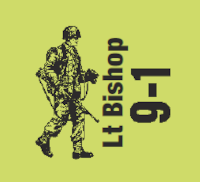
There was a recent discussion about the 3rd Die Rate Of Fire (3DR, ROF) mechanic on the ASL Discord server. Players were discussing the merits of 3DR versus the normal color die ROF. As is usually the case, much of the pro-3DR argument is based on preference instead of math. There is nothing wrong with preference, after all we play this game for enjoyment. But me, I am a math guy. I want to know what difference it makes. After all, if it doesn’t make a difference, why even use it?
I set about to explore the impact of 3DR using python. What follows is what I learned and what I think about 3DR. I am not trying to convince anyone about the merits or flaws of 3DR. I just want to provide people with the math situation and let you sort it all out for yourself.
What Is 3DR?
In case you haven’t been exposed to it, 3DR means rolling three dice for an attack. We use the third die in place of the color die to determine ROF. So when you attack with a weapon having ROF, you refer to the third die to determine if you have ROF. The original dice are still used to determine a hit or the IFT result. The color die against white die is still used to determine hit location when attacking vehicles with Vehicular Target Type. Everything remains the same EXCEPT for using the third die as ROF.
Why 3DR?
People who adhere to 3DR believe we should separate the results of IFT and To Hit (TH) DR from ROF. Adherents believe this because lower Original DRs get ROF more often than higher Original DR. Logically and mathematically, that makes sense. What I want to know is what difference does this make in the game and is it something I need to consider when playing the game.
Methodology
For the upcoming chart I wrote a program to roll three dice ten thousand times assigning values to red, white, and third against an arbitrary 8 TH. I compared each DR to this TH value, scoring a hit on a DR less than or equal to this value. I compared both the red and third die to a preset ROF value to determine if it kept rate on either the color die or the third die. The resulting charts record the number of times a hit with rate and a miss with rate happened.
A note about the charts. In each chart, the C Miss ROF line hits the zero mark on the horizontal axis. We expect this. For example, with ROF 1 the biggest number you can roll and maintain ROF is seven (1,6). So when the TH is 7 or greater, an Original 7 will always be a hit. The same holds true for ROF 2 and 8 TH, and for ROF 3 and 9 TH.
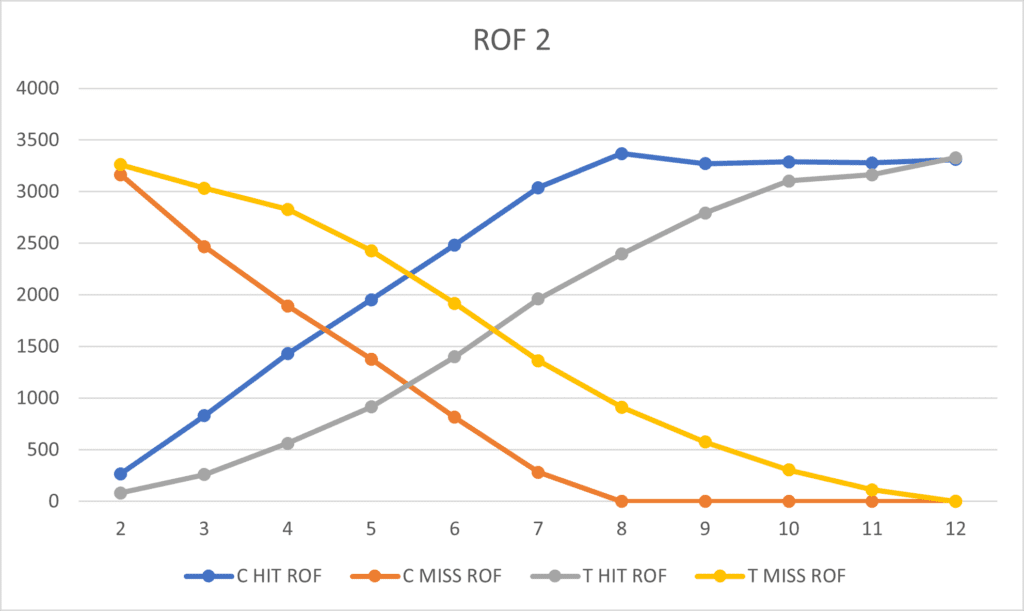
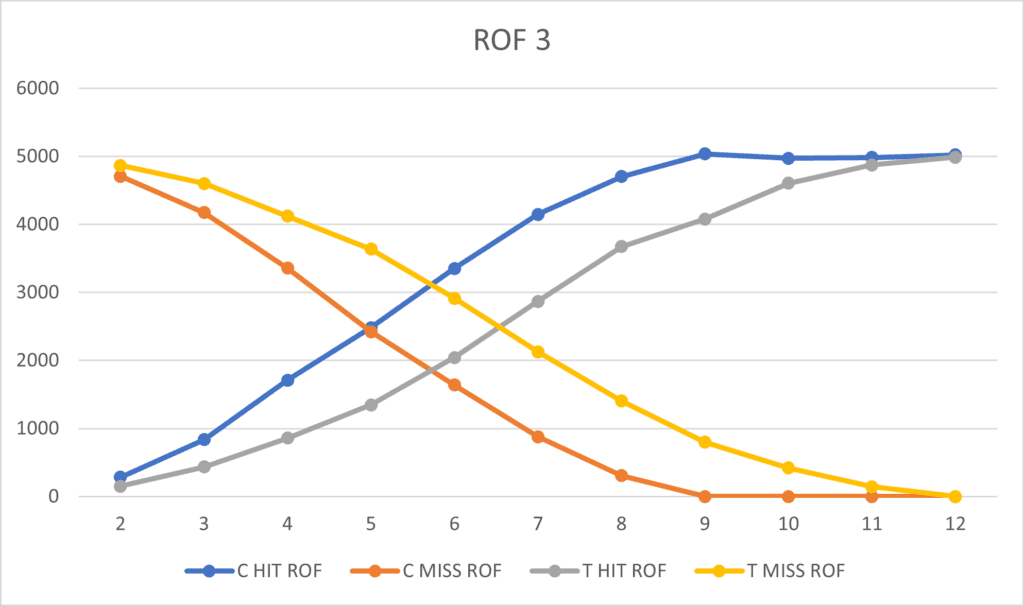
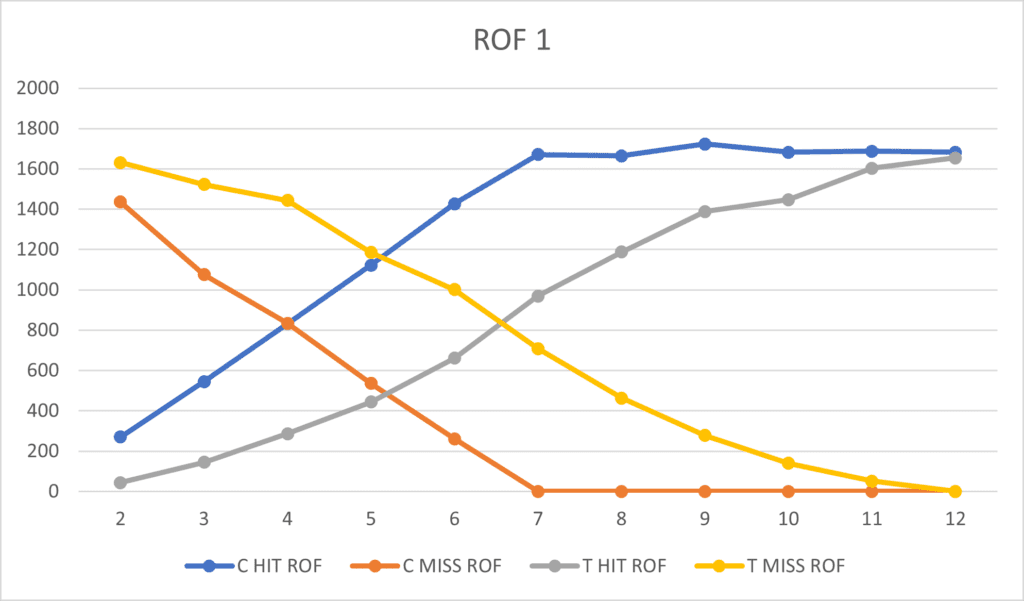
Observations
To draw conclusions, we compare the “HIT” lines with one another and the “MISS” lines with one another. Each of these charts show a hit is more likely to maintain ROF when using the color die than when using the third die. Conversely, ROF is more likely to be maintained after a miss when using third die ROF. This is as expected and in keeping with the goals of the third die ROF intent. On initial observation, this seems to work as intended.
What Effect Does 3DR Have On Vehicles?
You must first hit a vehicle to eliminate it. This To Kill (TK) DR should be relatively independent from the TH DR. In the following charts, Series 1 lines represent color die ROF and Series 2 lines are 3DR. The horizontal axis is the TK# needed to eliminate the vehicle. The vertical axis represents the elimination rate. For these graphs, the program took a shot until it eliminates the vehicle or lost ROF. For these, there are no provisions for Shock or Immobilization. Therefore, the elimination rate is always zero for a 2 TK.
From these plots we can see the elimination rate remains very close for each of these data sets. The largest delta was .04%. Overall, 3DR is slightly more effective than color die ROF but the difference is insignificant. The differences here could even be just noise in the data. I believe this is a difference without distinction.

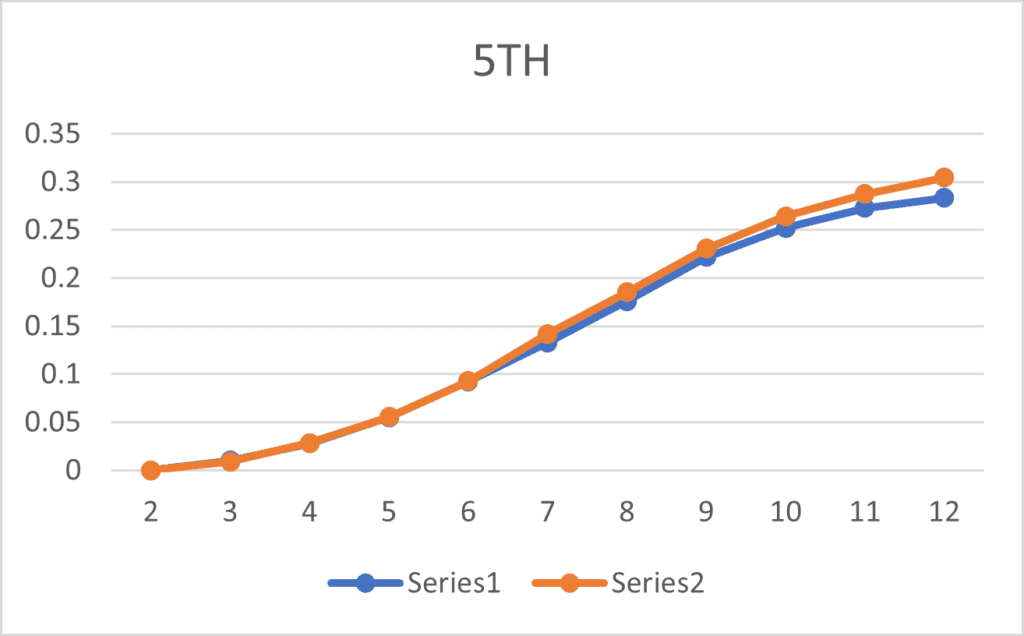
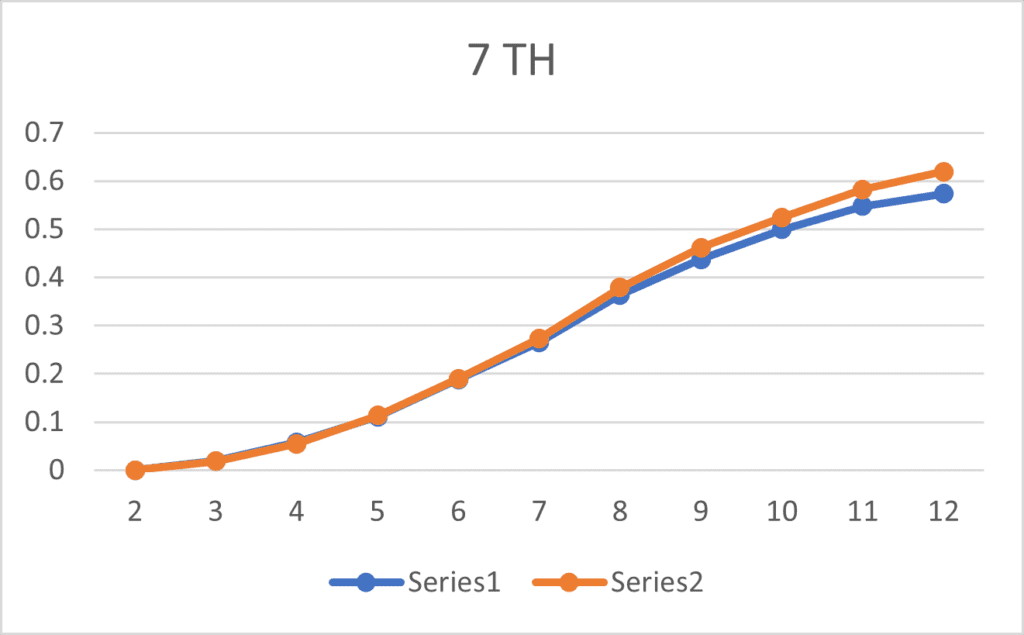
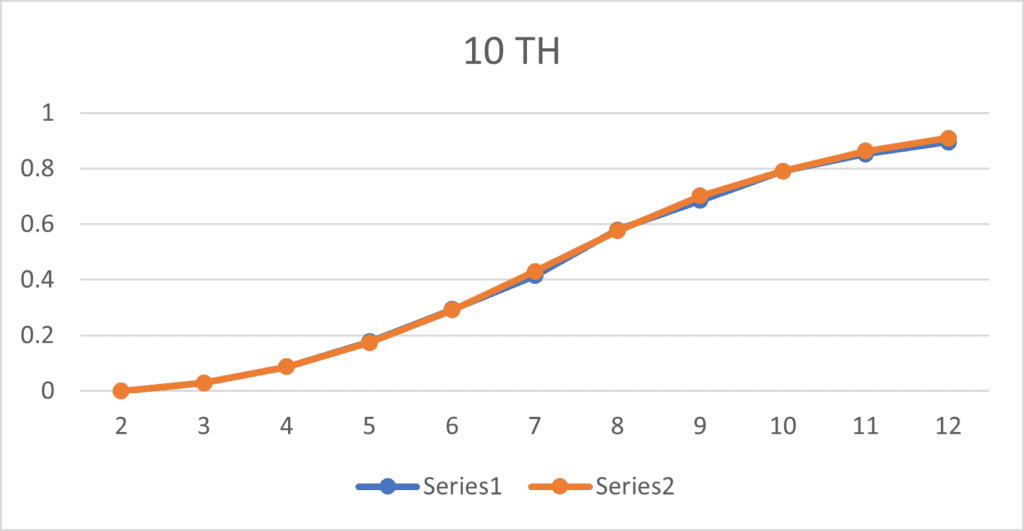
Anything Else?
The last thought I have on the subject relates to a footnote 20 in Chapter A of the ASLRB. Footnote 20 says in part “A side benefit of the rule in its present form is that it acts as a sort of balancing mechanism; the player getting the majority of the good DR is also likely to be subject to more Sniper attacks as a consequence.” Way back at the beginning of this article, I pointed out that the red and white dice still count for everything else but ROF. This includes Sniper Activation. By using a 3DR you are eliminating one of the biggest benefits of rolling low–and increased chance of ROF–while doing nothing to mitigate the downside of potential Sniper Activations.
Pro’s And Con’s

I have stated the up- and down-sides of using 3DR throughout this article. On the positive side, it has divorced ROF from the TH chance. While the chances of ROF remain more or less intact–you will have just as many “rate tears” using the 3DR ROF–there will just be fewer “hits” or low IFT DR among these ROF runs. This will definitely influence balance but it is likely impossible to say if this is good or bad. With 3DR ROF, streaks will be less effective as high/bad DR are mixed in with low/good DR. This could insulate games from streaks of luck. But these streaks of luck may be just what a scenario needs to keep it in balance. I believe balance based on streaks of fortune to be highly unlikely.
The SAN downside is something to consider. The higher the SAN, the more likely you are to roll it on two dice. This 3DR mechanic specifically removes ROF from this Original DR. This means you will get less ROF than expected while still being exposed to the same SAN. It may be worth lowering the SAN by 1 or putting in some other mechanism to reduce Sniper Activations. I hate the SAN mechanism in ASL so I am probably not a good judge of this. Likely, the effect is also negligible, but it is enough for me to never want to play 3DR. Snipers ruin games. While playing 3DR doesn’t make them more active, not getting the ROF you should on a low DR makes Snipers suck even more. I don’t need that personally.
Conclusion

Using 3DR for ROF most likely has a negligible effect on the game. It does exactly what it sets out to do and does a fairly good job of that. The effectiveness of the TK or IFT DR remains unchanged. The biggest difference being that low DR have less chance for ROF using 3DR versus color die. Dissociation of ROF and effect flattens out the luck factor. Low DR do not create chances to keep rolling using 3DR. If you are a highly skilled player, this reduced streakiness probably has you salivating. Your level of play is probably enough to win most games and taking luck out of the equation as much as possible breaks in your favor.
Whatever effect it has is by design or probably so small as to be inconsequential, if relevant at all. The only quibble with the system is the punitive implementation of Snipers. And for reasonable people–which doesn’t include me with Snipers–probably isn’t that big a deal either. I would have to do more work to see. If there is a demand for that, let me know. – jim


Pretty much mirrors my “gut” feeling about a 3rd ROF die (never explored the math of it though). The most interesting aspect is certainly the SAN effect, which I never explored nor thought about. Like yourself I was never a big fan of the random sniper, at least the way it was incorporated into the system. Like the idea of increasing the ROF as well as the FP of SW (especially) at the same time; I thought this was a bit of overkill and antithetical to the basic premise of the game system from SL to ASL. But then again, I’m just an old fuddy-duddy and the mind wanders a bit.
Another possible correction:
This means you will get less ROF than expected while still being exposed to the same ROF.
to:
This means you will get less ROF than expected while still being exposed to the same SAN.
No need to publish these comments, btw.
Thanks. You are correct of course.
I use 3DR with my opponents all the time. It works better IMHO.
A simpler analysis would focus on a SW using IFT with ROF. Ignore Ordnance and TKDR for now. It certainly complicates the issue.
The problem with 2DR is that a low roll tear becomes doubly lethal. Not only do you do awesome damage with your low rolls………..you get to do it again. A HMG on a tear can end many low unit count scenarios. How is that fun for anyone?
The advantage with 3DR is that same HMG now gets combinations that are NOT double lethal. First shot might be no result but rate. This can’t happen with 2DR. First shot might be lethal but no rate. This can’t happen with 2DR. I have never had 3DR disappoint me like 2DR can.
I don’t disagree with that. As I said, my only real issue is the SAN remains the same while my ROF is changed out. It actually increases the “balancing effect” of the SAN. I would make some sort of small adjustment to account for the effect. Maybe I will do that work tomorrow and append that here.
WRT to ROF and SAN: Assume a SAN 4 and a ROF 1 weapon. For 10000 attacks, you expect to make about 11670 DR. For those ~11K DR, you expect ~970 SAN. From those 970 SAN, you can expect about 160 Sniper 1 and 160 Sniper two attacks. Now, not all of those Active Snipers won’t be from an Original DR that keeps ROF. So I wrote something to track how often ROF was rolled and how often that ROF resulted in a SAN Activation for both color die ROF and 3DR. The correlation between color die ROF and an ACTIVE sniper is very high compared to 3DR. You’re 4 to 6 times more likely to activate a Sniper while maintaining ROF with color die ROF than you are with 3DR. When considering ROF 2 and ROF3, this works out to twice to three times as likely.
Having said that, both methods still roll statistically predictable Active Snipers. Across 10K DR, you’ll get relatively the same number of SAN activations but those activations are less likely to as a result of a ROF run using the 3DR method.
Again, I am sure this will have some effect on play, but I can’t see what it is. I stand by the judgement I made in the article. At higher levels of play, 3DR is probably very appealing as it will smooth out streaks resulting from a run of luck.